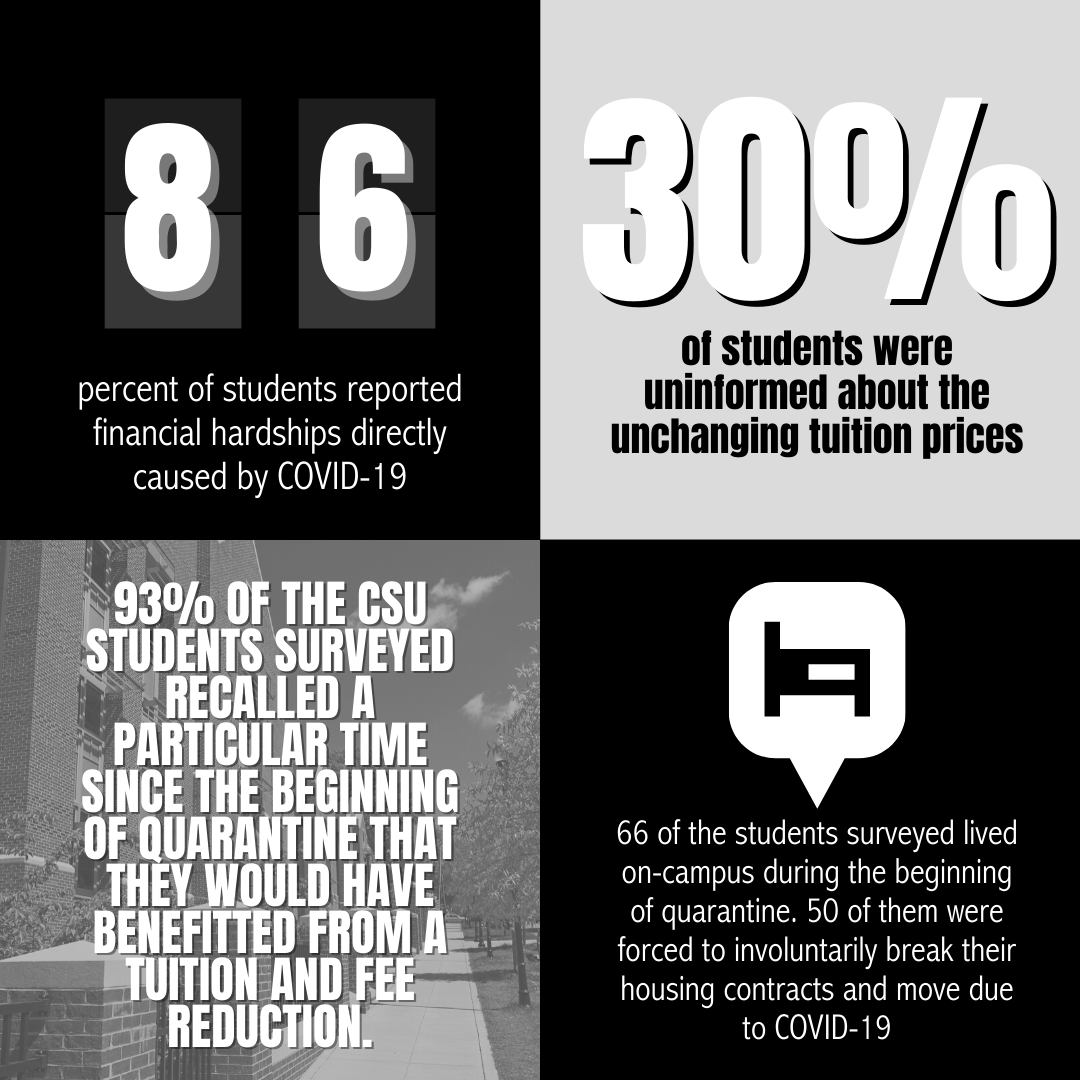
Editor’s note: As of Fall 2020, the California State University (CSU) system has ruled that all university tuitions and fees will remain unchanged regardless of the online transitions caused by COVID-19. For Fresno State students, that means that they will continue to pay at least $3,321.50 in tuition fees for the Fall 2020 semester to remain full time students. In Spring 2020, they will have to pay at least $3,281.50 in mandatory fees and tuition.
We are currently living in a world rocked by a virus. This pandemic has caused virtually every aspect of life to be disrupted, with social distancing guidelines and stay-at-home orders causing businesses and schools to clear out in hopes of keeping students, staff, and their families safe.
Because of this shutdown, educational institutions and the economy as a whole are struggling more than they have in decades. This is especially true for young people just entering the workforce. These workers, mainly 24 and under, are being most affected by the economic depression because they are the first to be let go or deemed “nonessential” with no work-from-home alternatives.
Frankly, the numbers speak for themselves. According to the U.S. Bureau of Labor Statistics, as of April 2020, the unemployment rate for youth aged 18-19 was 34 percent, while the unemployment rate for April 2019 was only 13 percent for the same demographic.
This diminished youth work force was also prevalent in the age group of 20-24 year olds, with that demographic having an unemployment rate of nearly 26 percent in April 2020 compared to the measly 6.5 percent of the same month one year prior.
It is not a coincidence that these same age groups are the ones that make up the majority of the student body population of higher education institutions. This recession has made it even harder for anyone trying to stay afloat while also receiving a higher education, but it has been especially detrimental to those whose livelihoods depended on their college campuses, which are now deemed inoperable.
Most college students have been forced to evacuate their living situations and move back home, with 52 percent of adults under 30 living back at home with their parents as of July 2020.
The California State University system, like most other systems of learning, has adapted to the pandemic by moving all classes online, with the entire 2020-2021 school year slated to remain virtual. There are very limited exceptions to these completely online modes of learning, with most everyone following the same virtual protocols.
So, with the mode of learning changing, many students expected to see a lowering of tuition costs, or at the very least a refund on campus fees that are now inaccessible to students.
Unfortunately, the CSU system has decided against these changes. They are moving forward with current tuition rates, including campus fees, against the direct wishes of their students.
Over 200 current CSU students were surveyed and the results overwhelmingly disagreed with the decision of CSUs and local administrations. 221 out of the 232 students surveyed reported that they believed tuition fees, and on-campus fees in particular, should be lowered because of classes moving online.
The rest of the data can be found in the graphic to the left.
As the self proclaimed, “nation’s largest public university system,” the California State University system has been caught up in litigation since April as over 750,000 students filed a lawsuit against them because of the continued Spring 2020 semester fees.
This, paired with the petitions signed by thousands of students calling for reduced tuitions and fees, has put a spotlight on the California State University system to adjust their prices accordingly.
With the immense pressure on the CSU system to lower their prices, these young people can only hope that the CSU system listens to their students and provides some relief in a time where any unnecessary expense can leave students in a state of financial crisis.


